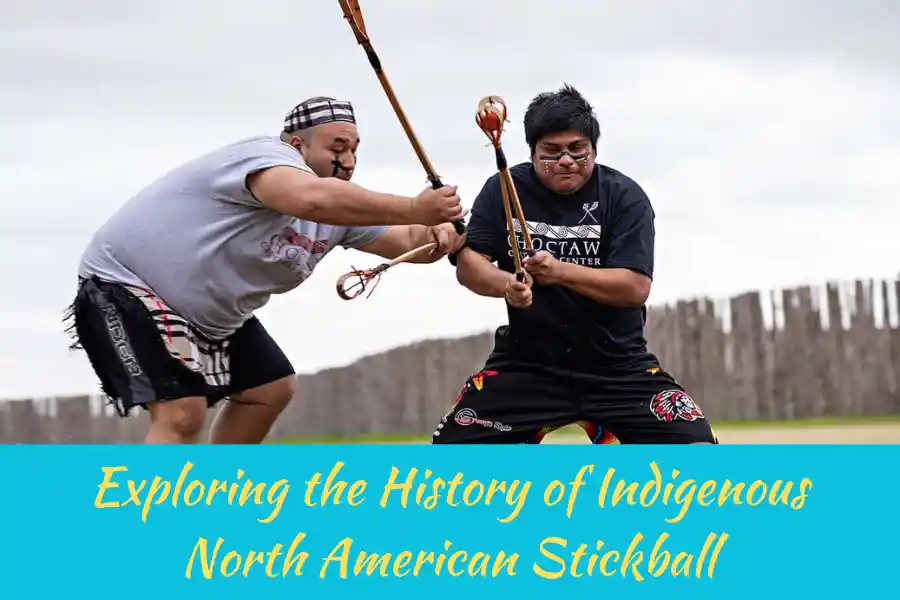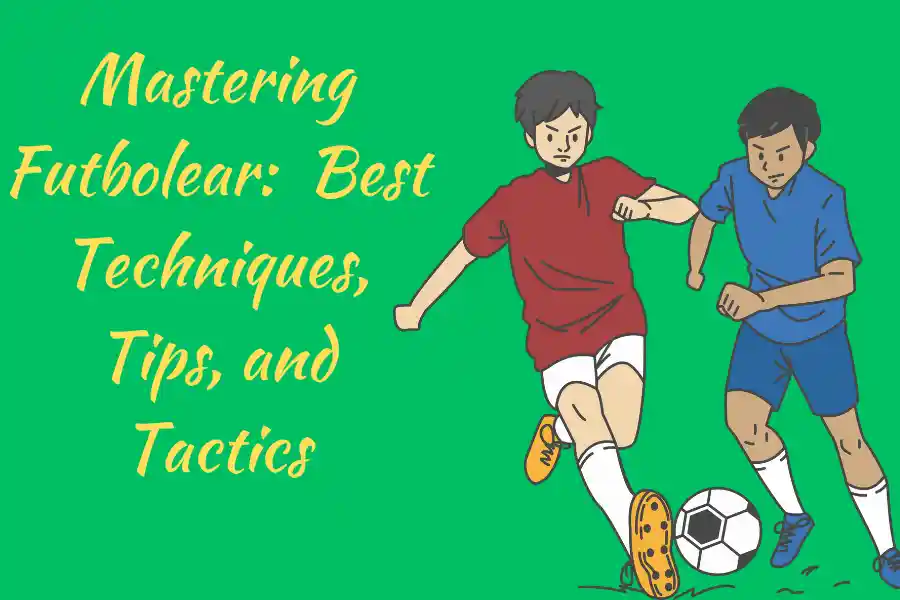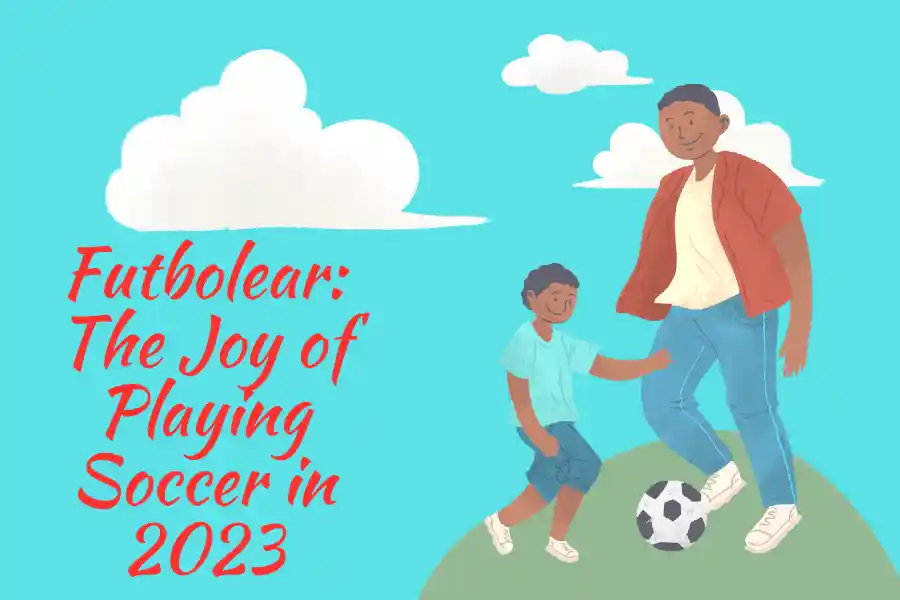Stickball, one of Indigenous North American culture’s oldest and most significant games, embodies centuries of tradition and community-building. From its origins as a ceremonial dispute-settler, it has evolved into a competitive sport, inspiring a new generation of Indigenous athletes. This ancient contest, known as Indigenous North American Stickball, resonates with spiritual and communal values.
We also highlight modern efforts to revive and promote stickball, underscoring its enduring importance in preserving Indigenous culture and identity. This living tradition is more than just a sport; it symbolizes the resilience and spirit of Indigenous North American peoples throughout history.
This exploration delves into Indigenous North American Stickball roots, diverse regional styles, and their role in colonization and resistance.
The Early History of Stickball
Stickball is an old game that Indigenous people in North America played long ago, even before the Europeans arrived. They found old sticks and balls in the ground, showing how much they liked to play. The game was important for making friends, solving problems, and staying healthy. People also bet on the fun, making it even more exciting. Stickball was unique to Indigenous people, even when the Europeans came and sometimes said they couldn’t play. But stickball stayed strong. It helped people fight against the changes and keep their culture alive.
Some used it to train warriors, while others taught young people about their traditions. And guess what? Even today, stickball is coming back! Young and older adults are interested in playing again. They have tournaments and teach the unique skills of stickball. Stickball is a tale of Indigenous solid people who kept their game alive, showing the world the spirit of Indigenous North American culture.
Introduction to Indigenous North American Stickball
Indigenous North American stickball is a fast-paced and physically demanding game played by various Indigenous tribes across the continent. It is a complicated and tactical sport that combines aspects of lacrosse, hockey, and basketball. The game’s object played on an expanse of turf between two sides of up to 10 players each, is to score by using sticks to direct a little ball into the opposition’s net area. These sticks are also used for carrying and passing the ball and checking opponents. While different tribes have variations, common elements tie all stickball games together.
This ancient game holds deep cultural and spiritual significance, reflecting Indigenous peoples’ resilience and artistic vitality. Today, there is a renewed interest in stickball, with communities hosting tournaments and passing down traditional skills and knowledge.
Legendary Stickball Heroes
Stickball has a long and vital history among Indigenous North American Stickball. Some players have become legends in the sport. Here are a few of these remarkable players:
Chief Aquash: She was a Lakota woman and a fantastic stickball player. She also stood up for the rights of Indigenous people. Even though the FBI tragically killed her in 1975, her memory inspires stickball players and Indigenous people worldwide.
Sonny Jim: He was a Cherokee stickball player known for being fast, agile, and accurate. He played on the Cherokee National Stickball Team, which won the World Stickball Championship in 1972.
Eddie Archie: Eddie was a Choctaw stickball player known for his strong playing style. He could score goals from really far away. He was part of the Choctaw Nation stickball team that won the World Stickball Championship in 1980.
David Crowe: David was a Yuchi stickball player known for being a great leader. He knew how to motivate his teammates. He led the Yuchi Nation Stickball Team to victory in the World Stickball Championship 1991.
Michael Cook: He is a Muscogee Creek stickball player considered one of the best in the world. He’s known for being great at everything in stickball, from handling the stick to passing and shooting. He’s helped the Muscogee Creek Nation Stickball Team win several World Stickball Championships.
These players are like superstars in stickball. They are heroes for today’s stickball players and for Indigenous people all over the world.
And it’s not just players! Many other Indigenous people have helped stickball as coaches, referees, and organizers. They’ve kept the game alive and ensured it stays an integral part of Indigenous culture. They’re like the behind-the-scenes heroes!
Traditional Gameplay and Rules

Stickball is an ancient North American sport in which two teams compete against one another. Each team can have up to ten players. They compete in large fields. One team must throw or smash a little ball into the competitor’s goal to earn points. Players use sticks to carry and throw the ball. They can also use their posts to block the other team’s players.
Here are some essential rules:
No Hands: Players can’t touch the ball with their hands. They have to use the sticks.
Checking: Players can bump into each other in specific ways. The skull or neck cannot be struck.
Goal Scoring: Points are obtained by putting the ball in the opposing team’s goal.
Game Length: The competition can stretch until 10 or 15 goals are scored.
Ties: Sometimes, the game ends with both teams having the same score.
Besides the rules, there are special ceremonies before the game starts. Players do these ceremonies to respect the game and ask for good luck. They also have music and dancing during the game. Playing Indigenous North American stickball needs skill. Players must be good with their sticks and work together with their team. It’s also a challenging game, so players have to be in good shape to do well.
Evolution and Adaptations of Indigenous North American Stickball
Indigenous North American stickball has transformed over centuries, reflecting the diverse cultures of participating tribes. In the early days, stickball likely emerged from simpler games related to hunting and warfare. It served various purposes:
Community Building: Bringing communities together for celebrations.
Conflict Resolution: Settling disputes between individuals or groups.
Physical Fitness: Training warriors and preparing for battles.
During the colonial era, European influence brought challenges. The Settlers restricted stickball and introduced new sports like baseball. Yet, the game persisted, with some tribes adapting discreetly using smaller equipment on smaller fields. Recently, a resurgence of interest in stickball has emerged among Indigenous communities:
Preserving Tradition: Reclaiming Cultural Heritage and Recognizing Stickball’s Significance
Youth Engagement: Providing a healthy outlet for energetic youth
Competitive Spirit: Leagues and tournaments offer higher-level competition.
Modern stickball has adapted to contemporary circumstances:
Equipment: Lighter materials enhance ease of use.
Field Size: Smaller fields make the game more manageable.
Rule Adjustments: Ensure fairness and safety.
Protective Gear: Helmets and shin guards ensure player safety.
Modern stickball retains the essence of the traditional game. It remains a dynamic, physically demanding sport that calls for teamwork, skill, and cooperation while celebrating Indigenous culture.
Must Read: https://informationalnews.com/mastering-futbolear-best-techniques-tips-and-tactics/
Cultural Significance and Revival of Indigenous North American Stickball
Stickball, a dynamic Indigenous game, combines lacrosse, hockey, and basketball elements. It holds deep cultural significance, teaching values like teamwork, respect, and cooperation while fostering community unity. Played for centuries, it served purposes ranging from community building to conflict resolution and physical training. Today, a resurgence in Indigenous North American Stickball is underway, driven by a desire to preserve culture, provide positive activities for youth, and compete at higher levels. This revival is a positive force, reconnecting communities with their heritage, keeping children active, and celebrating Indigenous traditions.
FAQs
What is Indigenous Stickball?
Indigenous stickball is an ancient sport played by various tribes in North America. It involves using sticks to pass, carry, and score with a ball, holding deep cultural significance.
How is it unique?
Stickball blends lacrosse, hockey, and basketball elements, emphasizing teamwork and respect. It’s fast-paced and physically demanding, making it distinct.
Is it still played today?
Yes, stickball is experiencing a revival. Communities host tournaments, pass down skills, preserve culture, and offer youth a positive outlet.
Conclusion
Indigenous North American Stickball is more than a sport; it’s a living tradition that embodies teamwork, cooperation, and cultural values. Its evolution over centuries has retained its essence. The recent revival of stickball is a beacon of hope, offering reconnection to heritage and a platform for youth well-being. It stands as a potent assertion of cultural identity. Learning its history and backing leagues and tournaments are crucial to supporting its resurgence. Together, we ensure this vital cultural heritage thrives for generations.
If you want to learn more, visit our website, informationalnews.com.

Hi, I’m Ryan! I’ve been blogging, writing, and doing SEO and marketing for over 5 years. I love creating interesting content and making sure people can find it easily on the internet. I’m also really good at coming up with cool marketing ideas to get people excited about stuff. When I’m not working, I enjoy playing with new tech stuff and exploring the outdoors for new ideas. Let’s make awesome things happen together!




One thought on “Exploring the History of Indigenous North American Stickball”